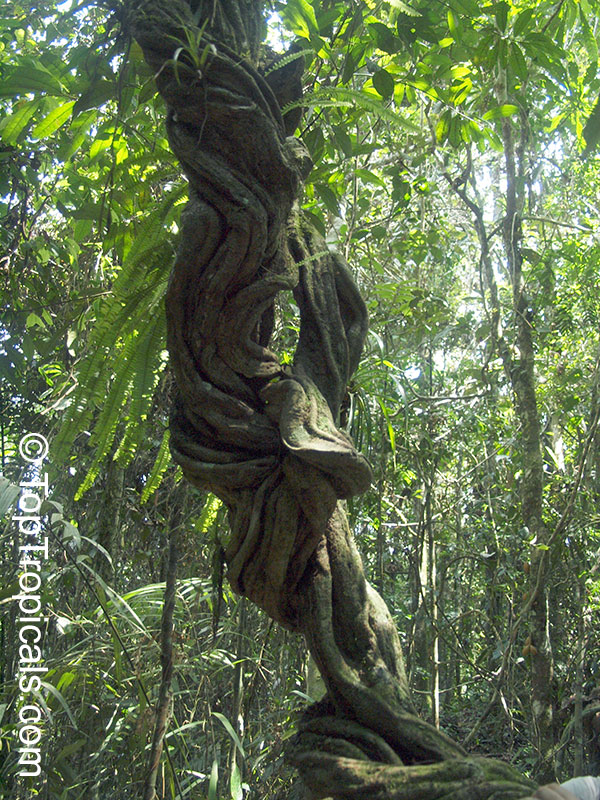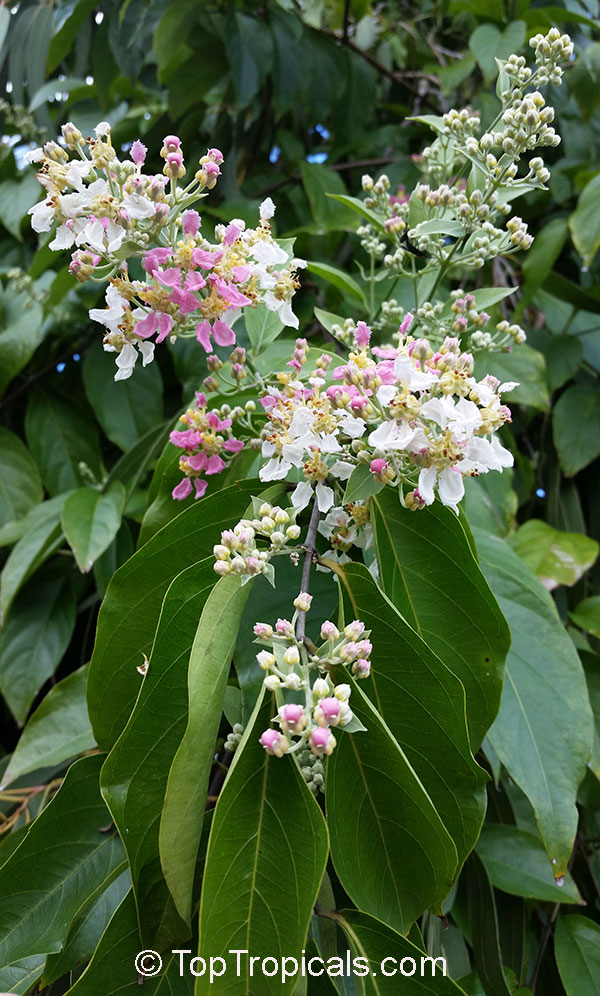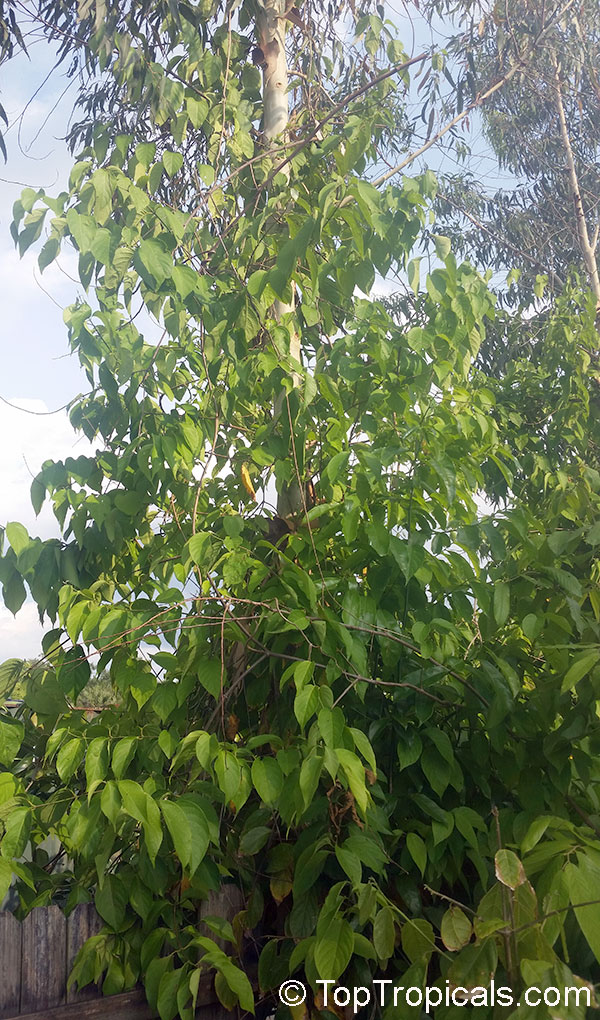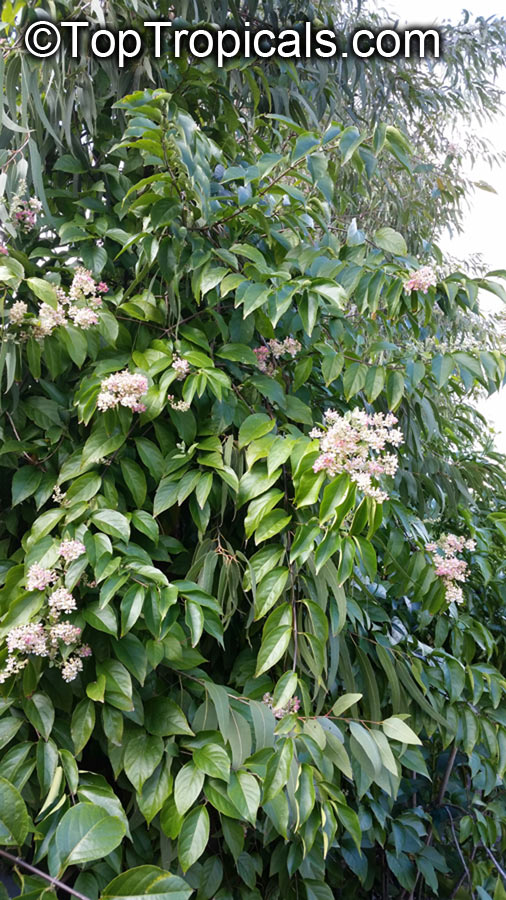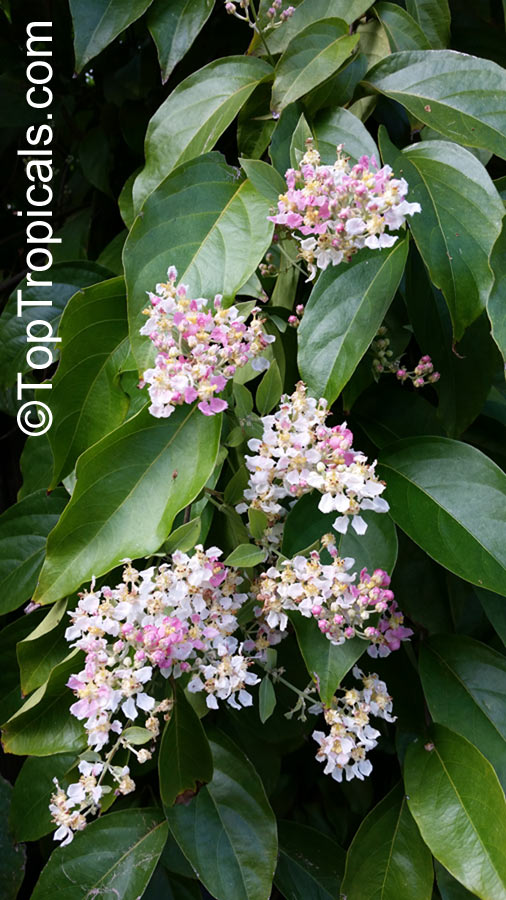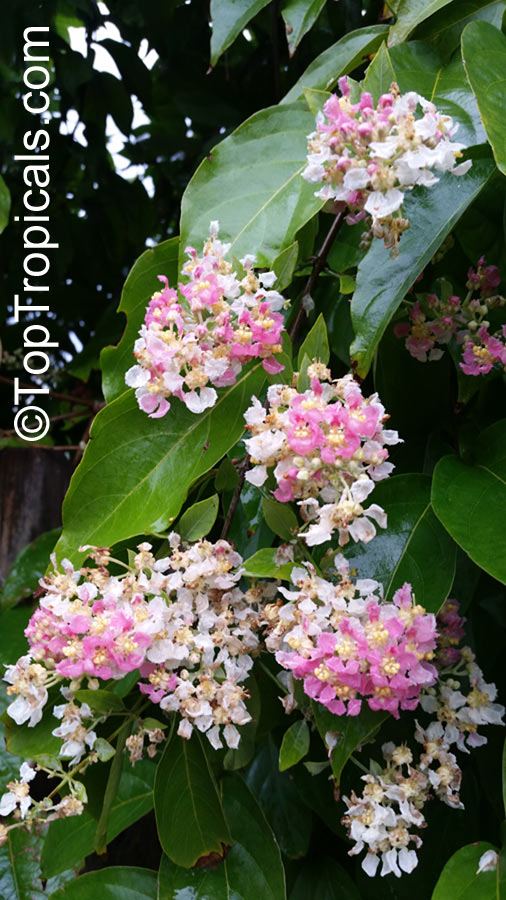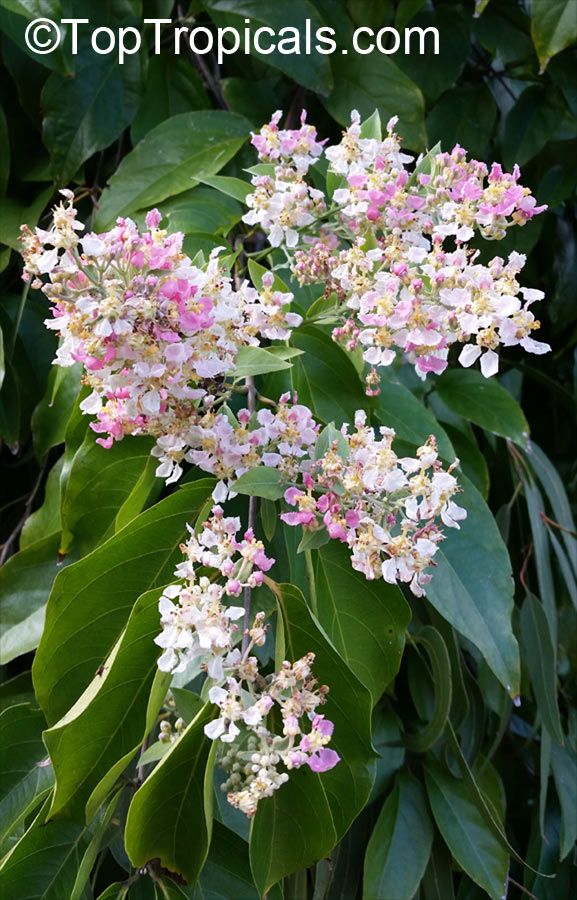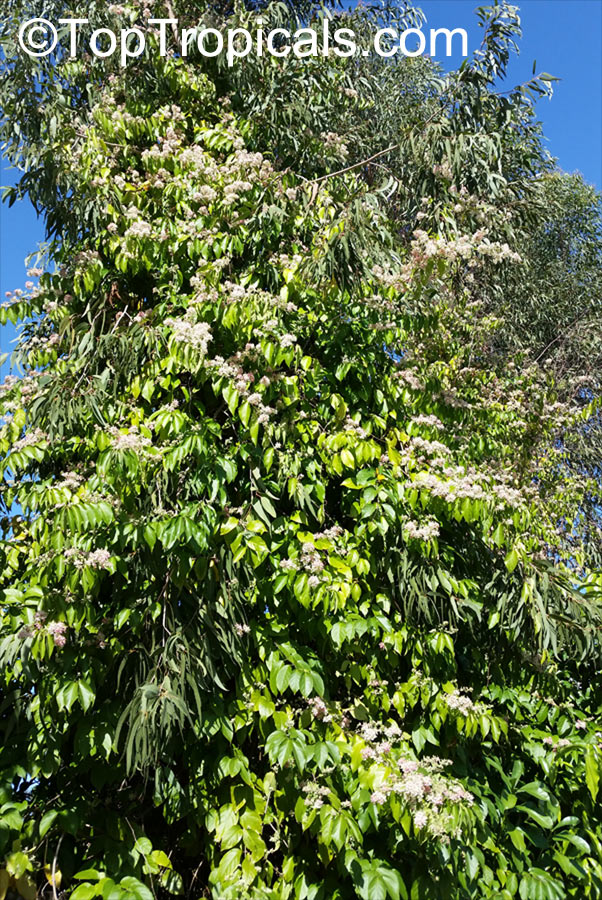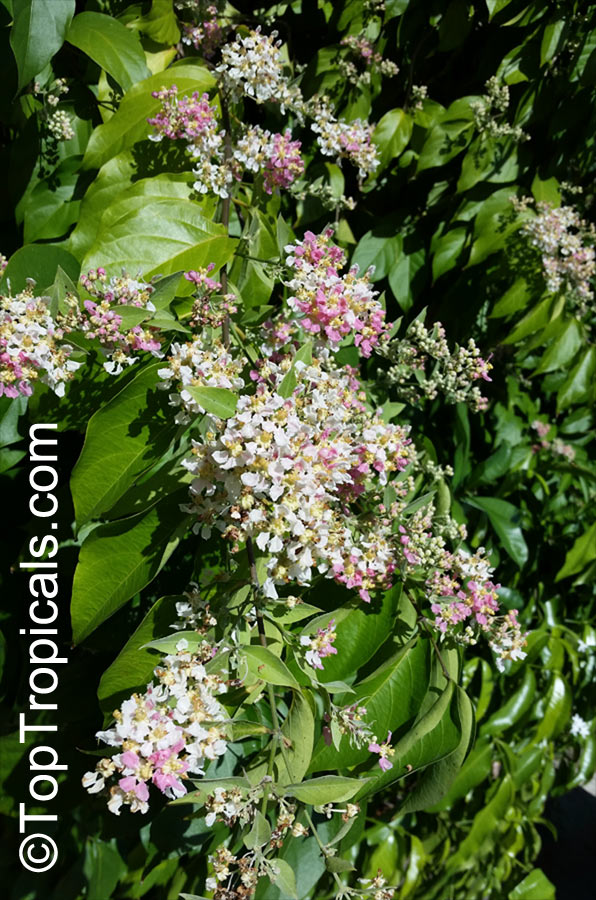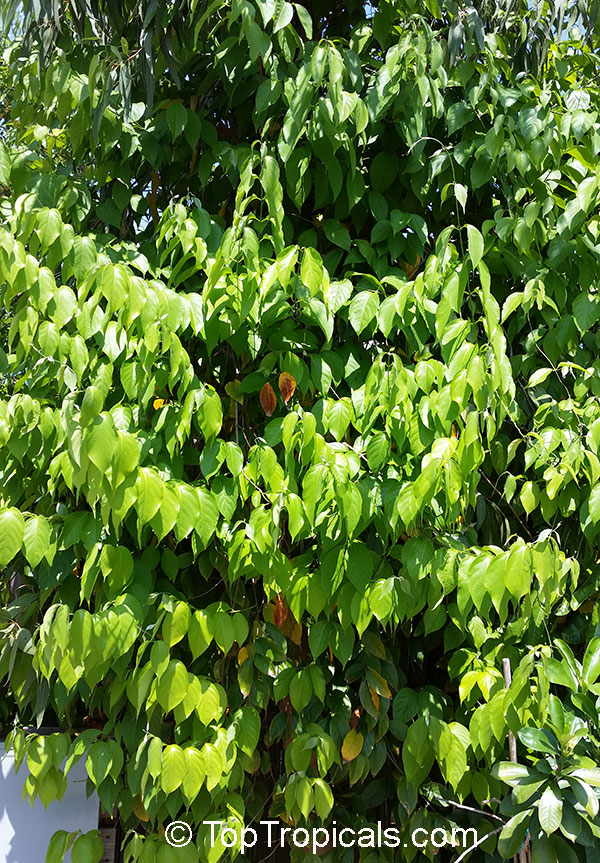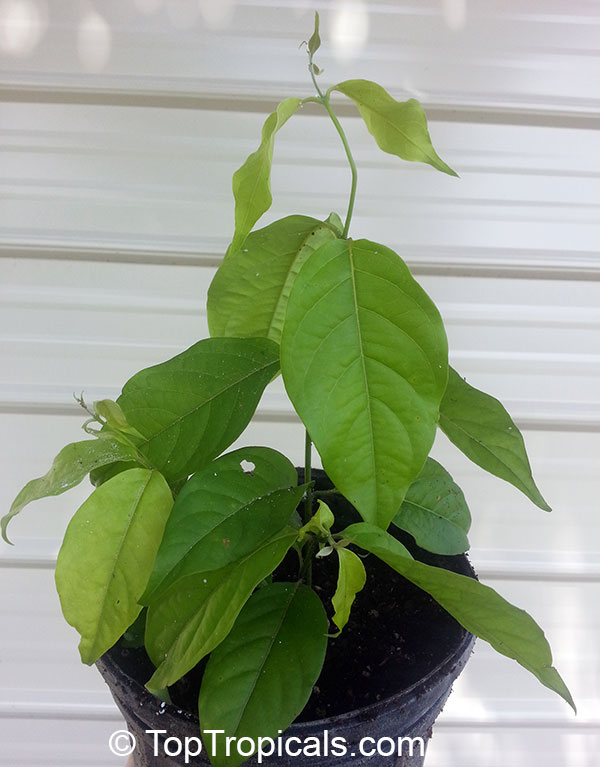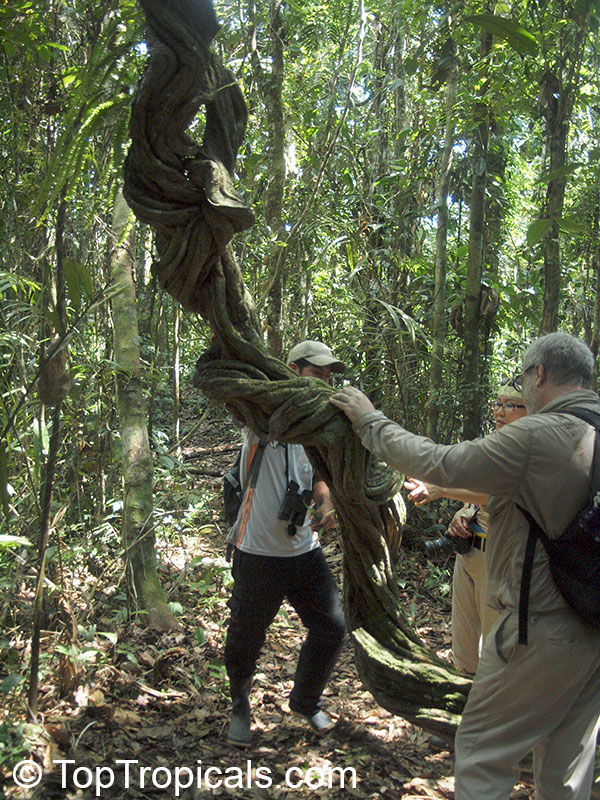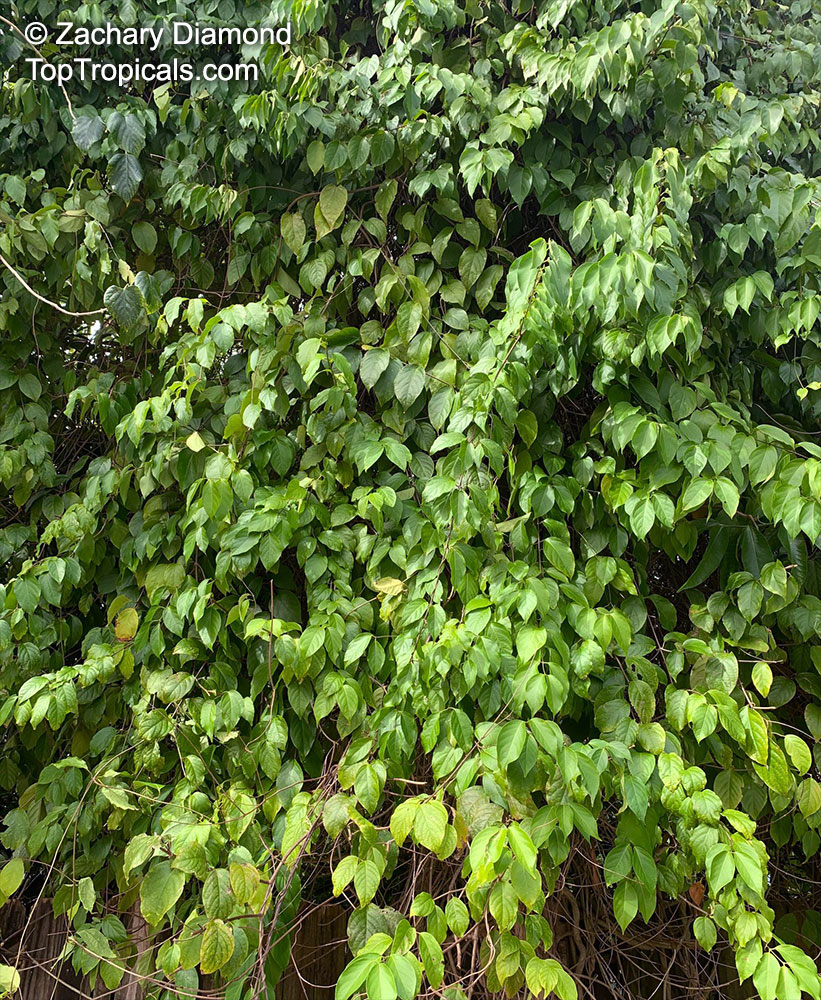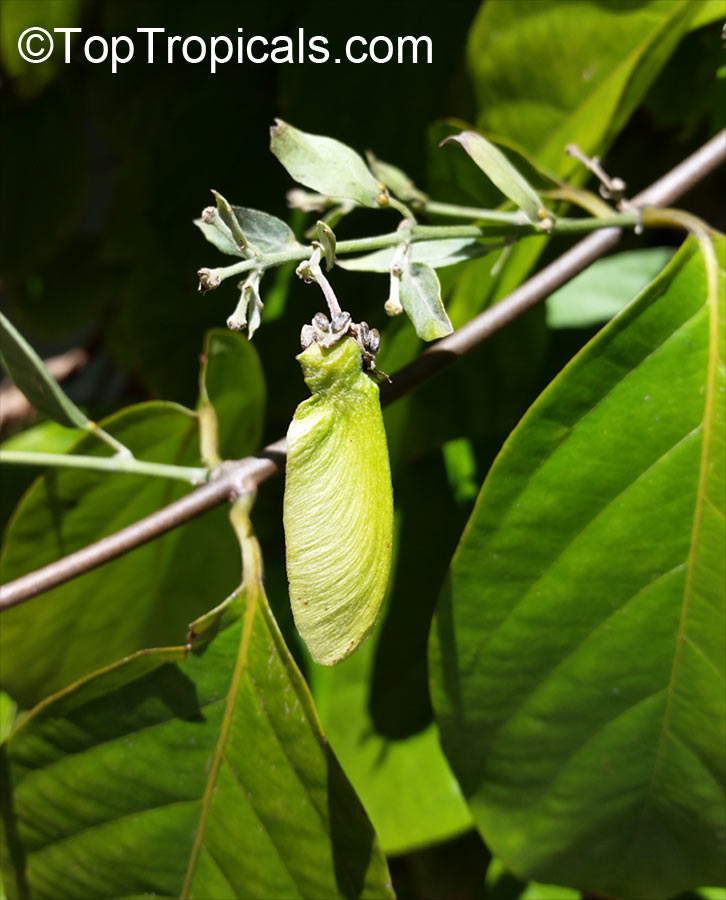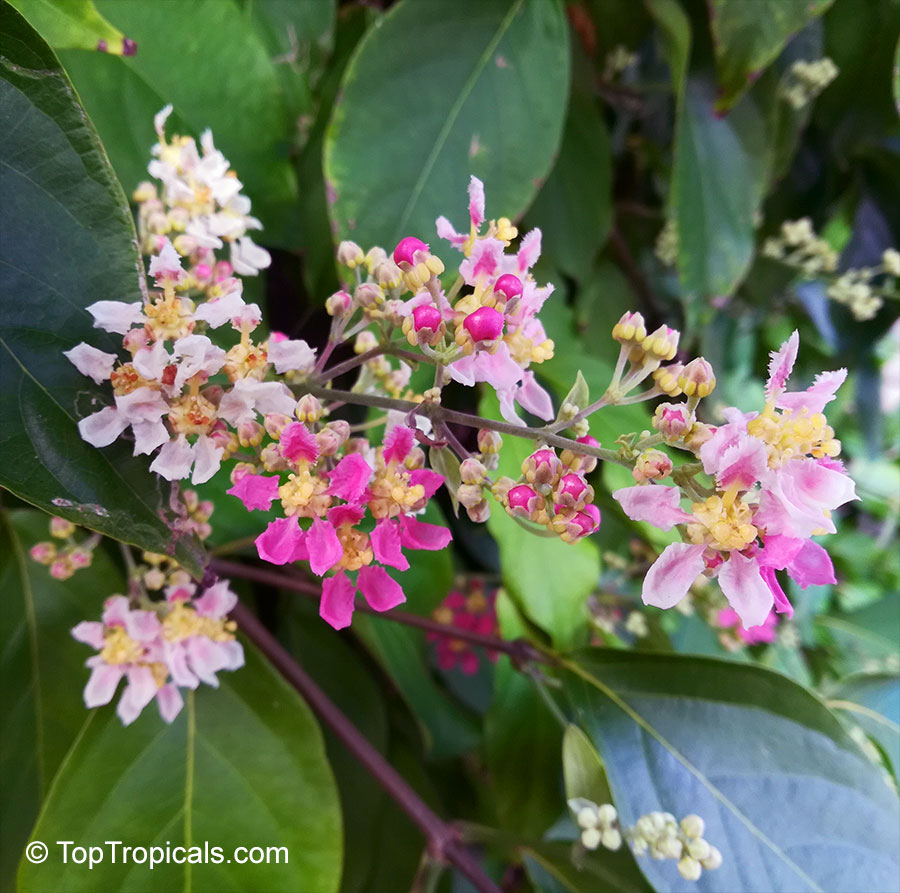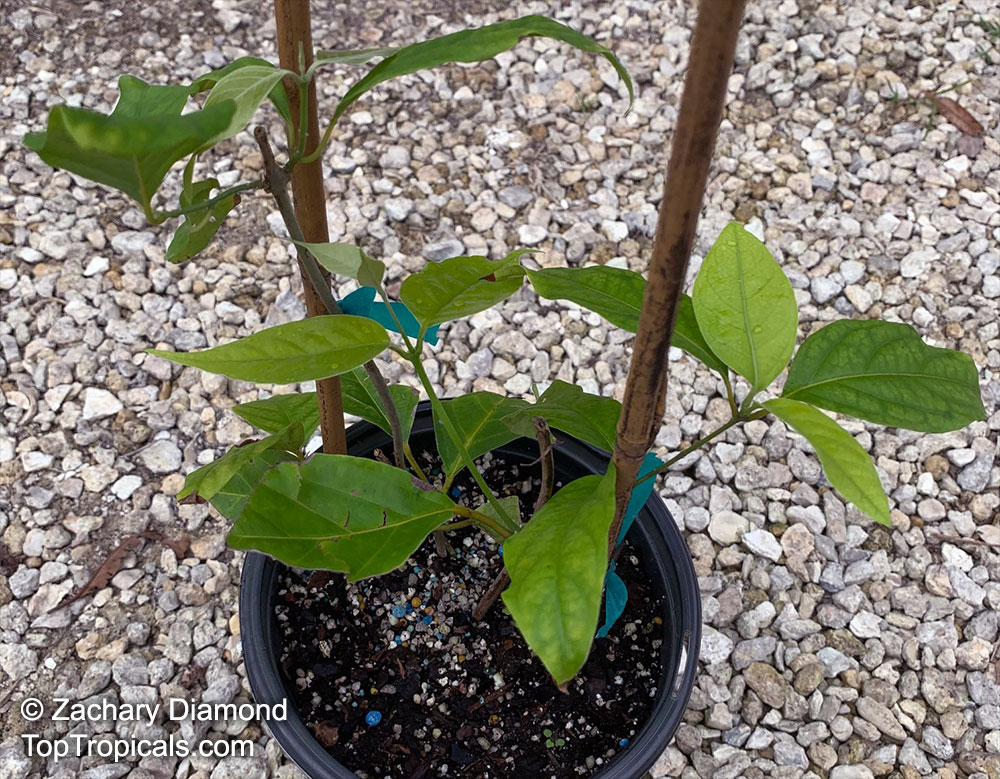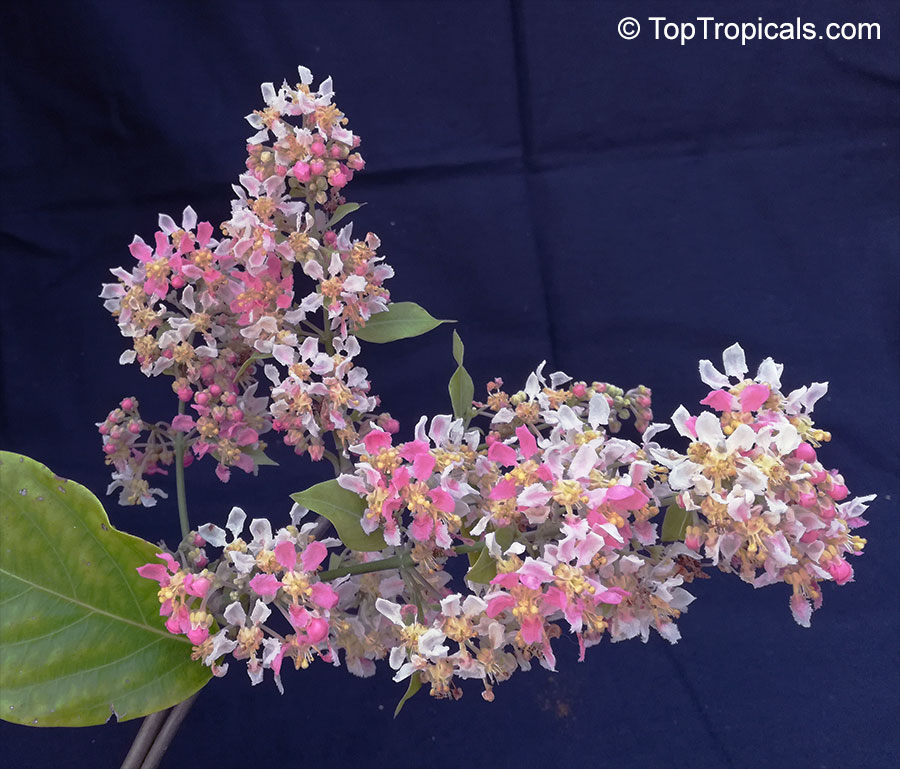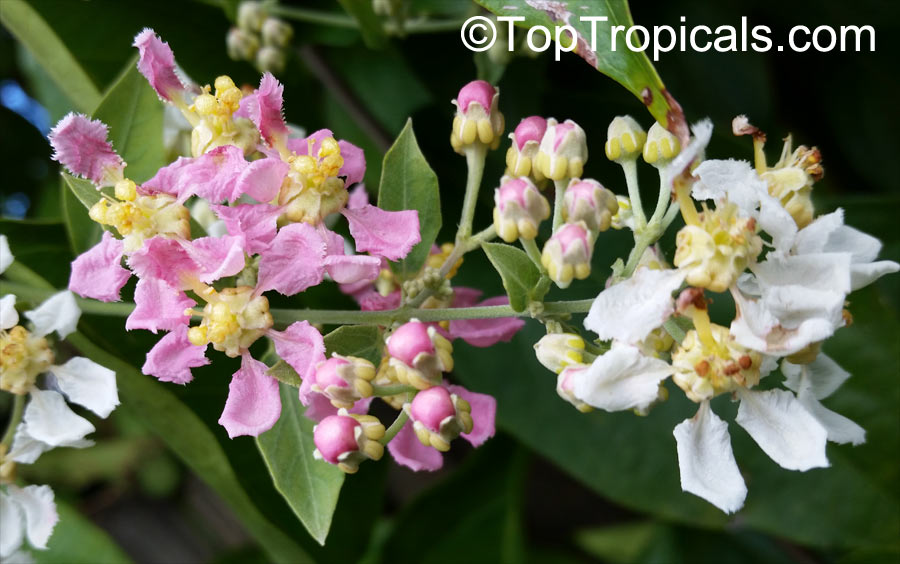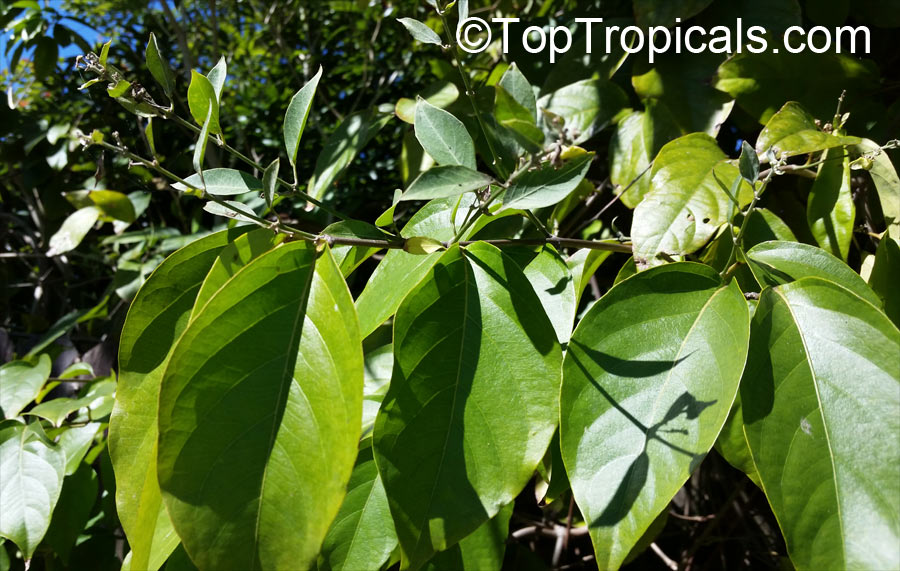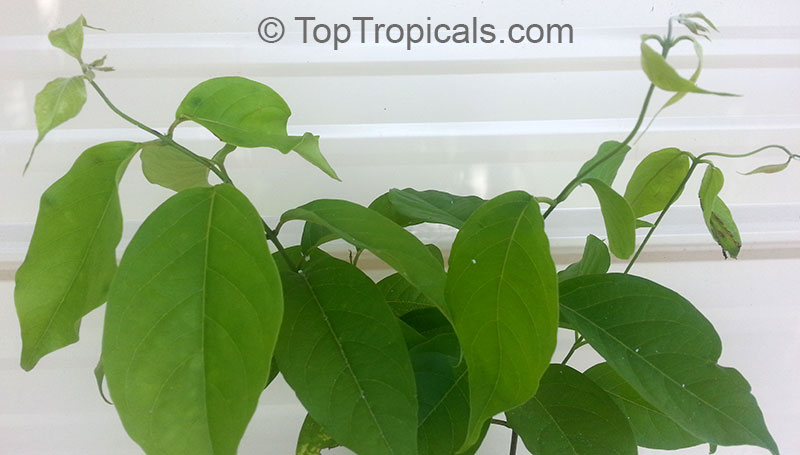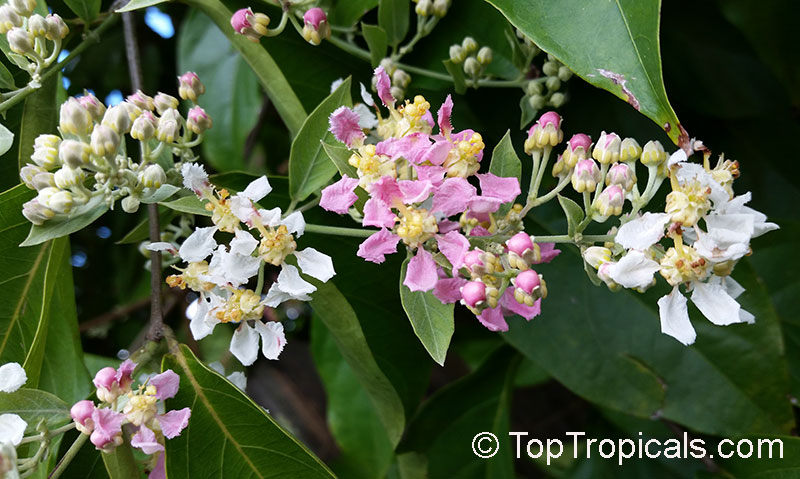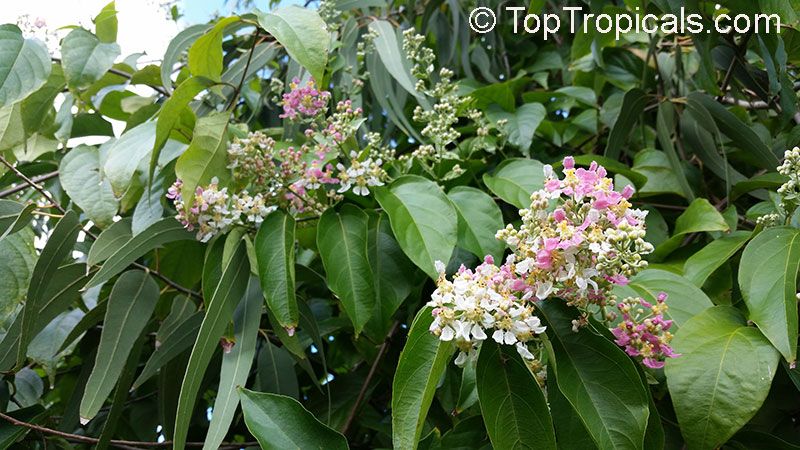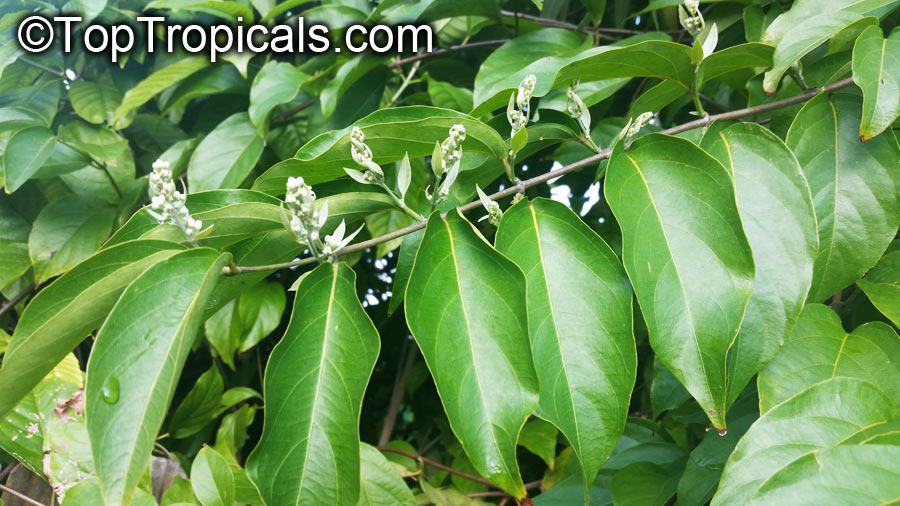Banisteriopsis caapi (Ayahuasca)
Top Tropicals Plant Encyclopedia
Botanical names: Banisteriopsis caapi, Banisteria caapi, Alicia anisopetala
Common names: Ayahuasca, Caapi, Yaje, Black Yage
Family: Malpighiaceae
Origin: South America









Banisteriopsis caapi is a woody climbing vine which is native to South America, where it grows in the Amazon rainforest. The vine has a reddish-brown stem and contrasting light green leaves. It flowers from late spring to early summer and produces pink and white or off-white flowers. The vine has a reputation as an ethnomedical plant and is part of many traditional healing ceremonies.
This jungle vine is used, along with the other primary ingredient the Psychotria viridis plant, to prepare Ayahuasca, a decoction with a long history of entheogenic uses as a medicine and "plant teacher" among the indigenous peoples of the Amazon Rainforest. It contains alkaloids, present in all parts of the plant.
The naming of the plant was actually dedicated to John Banister, a 17th-century English clergyman and naturalist. An earlier name for the genus Banisteriopsis was Banisteria, and the plant is sometimes referred to as Banisteria caapi in everyday usage.
The name Ayahuasca means "vine of the soul" in Quechuan, and the shamans of the indigenous western Amazonian tribes use the plant in religious and healing ceremonies. In addition to its hallucinogenic properties, caapi is used for its healing properties as a purgative, effectively cleansing the body of parasites and helping the digestive tract.
It is relatively easy to grow and is cold-tolerant when mature, capable of surviving short-term temperatures down to 30°F.
Banisteriopsis caapi is best grown in full sun or semi-shade, in moist but well-drained soil. It does not tolerate overly wet conditions and is prone to root rot if kept too moist. For this reason, in cold regions it is best grown in a sheltered location with protection from cold winds. Water the plant on a regular basis and provide supplemental fertilizer every two to three weeks during the growing season. Plant the vine in a pot which is at least 30 inches in diameter, allowing plenty of space for it to grow. Prune back the vine after flowering to prevent overgrowth.
